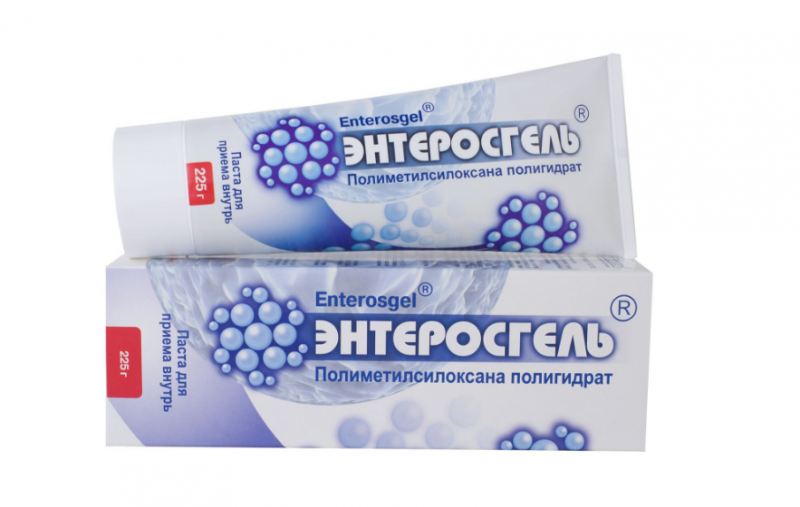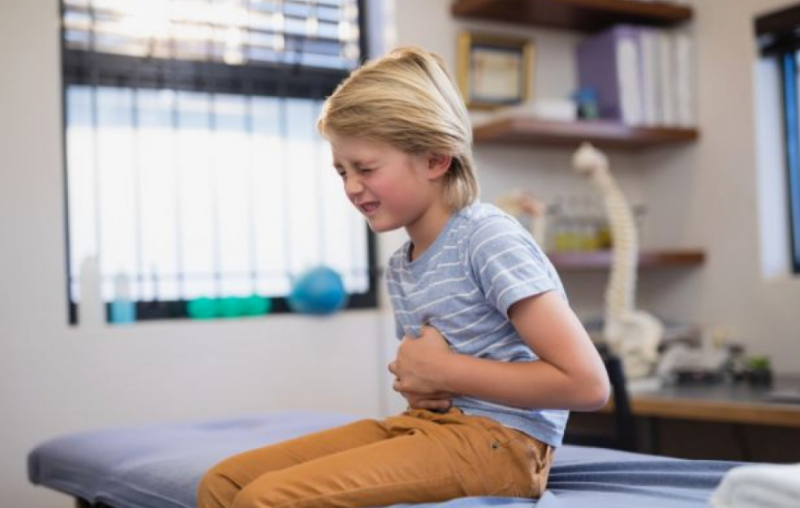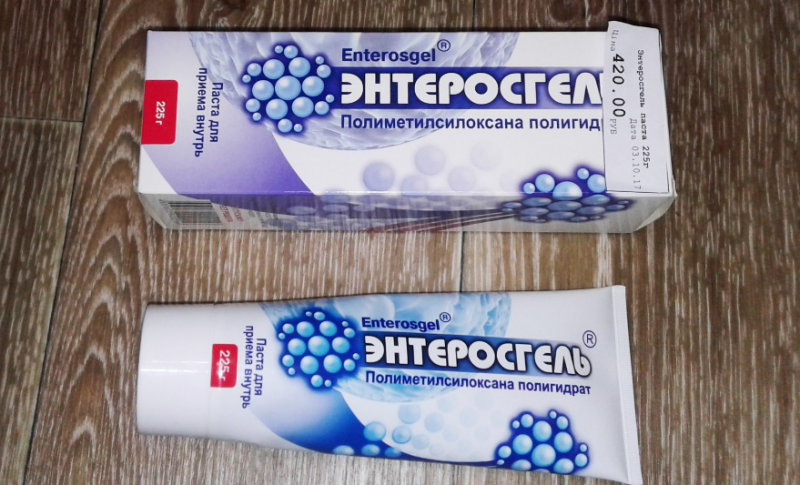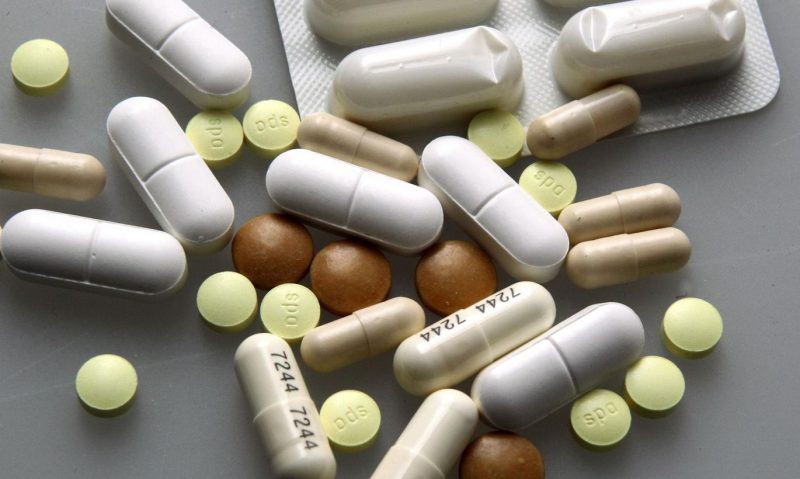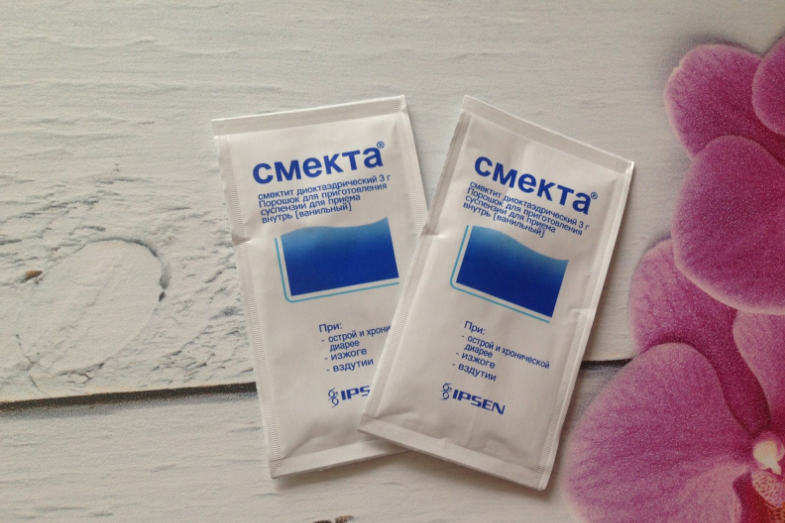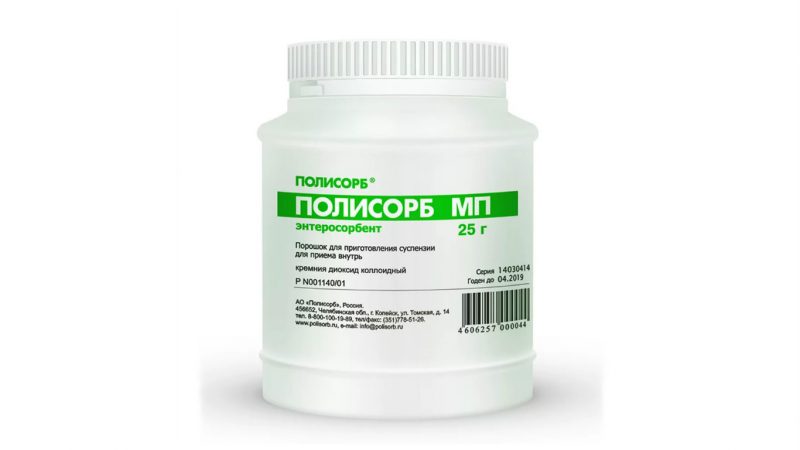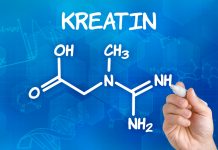Often at a young age, poisoning occurs with various substandard food products, as well as allergic reactions to drugs and other irritants. For the quickest cleansing of the body and minimize the consequences, Enterosgel for children is the most effective and safe.
Material Content:
- 1 Description of the dosage form and composition
- 2 Pharmacological properties and pharmacokinetics
- 3 Why is Enterosgel prescribed for children
- 4 Instructions for the use of paste
- 5 Drug interaction
- 6 Contraindications, side effects and overdose
- 7 Enterosorbent analogues
- 8 Enterosgel or Polysorb - which is better for children
Description of the dosage form and composition
The drug is available in the form of a gel-like mass of white color used in the preparation of a suspension or paste of the same color for oral administration.
The manufacturer produces the product in 22.5 g sachets made of foil and film. A cardboard box contains from two to twenty doses. A metal tube with paste, packed in a cardboard box, contains either 90 g or 225 g of the drug.
The main active ingredient of the drug is polymethylsiloxane polyhydrate. The substance was synthesized in the Soviet Union.
It was originally planned to be used for industrial purposes, but at the end of the last century, scientists found it to be used in pharmacology. Since then, the porous polymer in the composition of the drug has successfully passed numerous clinical trials and has proved its uniqueness. An auxiliary substance in it is purified water.
Pharmacological properties and pharmacokinetics
Enterosgel paste is an effective adsorbing agent, the action of which is aimed at the absorption of molecules of a certain size. The main active substance (polymethylsiloxane) is a sponge structure of silicon and its associated organic hydrogen. Adsorbing properties are manifested due to the capture of medium-sized molecules by voids formed in the substance and filled with water.
Due to its unique properties, the synthesized substance is hydrophobic, that is, it does not absorb water.
Pharmacokinetics is noteworthy in that the drug is completely excreted from the body unchanged for half a day. And thanks to the structure of the active substance, it is not absorbed into the mucous membranes.
Why is Enterosgel prescribed for children
Enterosgel can be given to a child in case of the following established diseases:
- acute food poisoning caused by bacteria of various kinds contained in the products;
- infectious diseases characterized by bacterial infection of the blood and necrotic damage to the tissues of the internal organs (in case of severe intoxication - in combination with other drugs);
- intestinal infections of any origin (as part of complex treatment);
- acute allergies to food or medicine - to accelerate the removal of toxins;
- increased rates of bilirubin, urea, cholesterol - for the speedy normalization of the condition in combination with drugs designed to exclude the cause of such symptoms;
- endogenous toxicosis, including that caused by potent poisons and salts of heavy metals;
- prevention of chronic poisoning in the event of a stay in an unfavorable environment.
Due to the specific molecular structure, the drug has a unique property - to bind toxic substances and remove them without changing the intestinal motor function.
When infected with rotavirus, prescribing a medicine reduces the period of diarrhea by 20 - 25%, and Enterosgel, when vomiting in a child, helps to neutralize bile, thereby blocking further urges. The instructions for use also noted a positive effect on the microflora, since the drug has the qualities of a probiotic.
Instructions for the use of paste
The dosage of Enterosgel depends on the age of the child:
- children under one year of age who are breast-fed or breast-fed, half a teaspoon 6 times a day, the average daily dose is 15 g;
- from 1 to 5 years - half a tablespoon 3 times a day, daily dose - 22.5 g;
- from 5 to 14 years - one tablespoon 3 times a day, daily dose - 45 g.
The drug should be taken either two hours before meals and other medicines, or at the same time after, drinking plenty of fluids.
It is possible for infants to dissolve each dose in water or breast milk for ease of administration. For the prevention of chronic poisoning due to adverse environmental conditions, the dosage can be reduced by 30%.
In the case of a severe case of intoxication, it is possible to double the amount of sorbent during the first three days of administration.
The course of treatment must be adjusted with a doctor who can make a more accurate picture on the basis of analyzes. However, for the prevention of the chronic form of intoxication and allergies, a duration of no more than 21 days is prescribed, with acute forms of poisoning - no more than a week.
The need for repeated admission should be clarified by a specialist.
Drug interaction
Interaction with other drugs is possible in case of violation of the regimen of enterosorbent. In case of simultaneous use with any preparations containing exogenous structures with a suitable molecular size, Enterosgel absorbs them and removes them from the body.
In the same way, the metabolites produced by the body in response to the administration of drugs are also excreted.Thus, the pharmacological properties of the active substance of the drug are reduced or completely neutralized. It should be noted that the sorption properties do not extend to the quality of intestinal absorption of microelements or vitamins, therefore, the combination of administration with Enterosgel in this case is possible.
Contraindications, side effects and overdose
The list of contraindications for taking the drug is limited to a sharply negative reaction to the main active substance and intestinal diseases, which led to the loss of muscle tone.
Side effects in the form of impaired bowel movements or nausea are allowed. There may be a feeling of disgust for the drug if the child suffers from a severe degree of liver failure or the process of urine output is impaired.
Since Enterosgel is an intestinal adsorbent, its overdose is unlikely. At the moment, not a single case has been recorded.
Enterosorbent analogues
On pharmacological open spaces there are many analogues of Enterosgel. They differ in the active substance and the mechanism of interaction with the body and toxins.
- Smecta. The drug is available in powder form for the preparation of the mixture. The granules must be thoroughly mixed, however, they will not succeed in completely dissolving - a small precipitate will remain. In this regard, the rate of achievement of the adsorbing effect decreases, Enterosgel is faster ready for the effective removal of toxins from the body, and the amount of drug for treatment needs less. In addition, the composition of "Smecta", in addition to the main active substance, contains auxiliary substances - flavorings and fillers. As a result, fructose intolerance and any metabolic disturbances associated with it are added to the list of contraindications.
- Enterofuril. Absolutely different pharmacodynamics when observing a similar result. Unlike Enterosgel, Enterofuril is an antimicrobial drug with a wide coverage of microorganisms that are susceptible to it. The action also extends exclusively to the intestinal region, and the absorption of the mucosa is close to zero. However, despite the stated lack of influence on the microflora, there are frequent cases of allergic reactions that stop with the use of Enterosgel. Therefore, the use of Enterofuril is contraindicated in children under three years of age.
- Activated carbon. Undoubtedly, an analogue, which is also a sorbent, is more profitable from a financial point of view. However, the structure of the drugs is different. Since the active substance of Enterosgel was synthesized, the molecular structure has an ordered spongy structure with an average cavity size. Activated carbon, on the other hand, has a chaotic structure and more voluminous pores, which are also able to remove not only harmful substances, but also trace elements necessary for the body. Another disadvantage is the bright color of the product - after taking coal it is impossible to make endoscopic examinations.
- "Lactofiltrum." Unlike Enterosgel, Lactofiltrum has two types of active ingredients. The first is lignin, which carries out the detoxification process, but is able to influence the microflora due to the absorption and removal of beneficial microorganisms. The second component is lactulose, which carries out recovery after the harm done or even improves the condition of the intestine. Therefore, often Lactofiltrum is used as a prophylactic to cleanse the body.
Enterosgel or Polysorb - which is better for children
"Polysorb" is available in the form of a powder for oral administration, therefore, there is a chance of damage to the child’s infectious intestines with microgranules of the drug substance. And although it has identical pharmacodynamic properties, the main active substance has less selective properties as a sorbent.
As a result, together with toxins, the elimination of protein compounds necessary for the body is also possible. The only case when such a situation is permissible is a burn, as a result of which an excessive amount is formed. In addition, “Polysorb” does not have any taste, and “Enterosgel” has a light sweetish aftertaste and a pleasant texture.
In case of poisoning of a different nature, allergic reactions and in other situations when it is necessary to use an effective intestinal adsorbent, it is possible to prescribe Enterosgel. Its positive characteristics and safety are proved by a large number of clinical studies and the experience of numerous parents.



